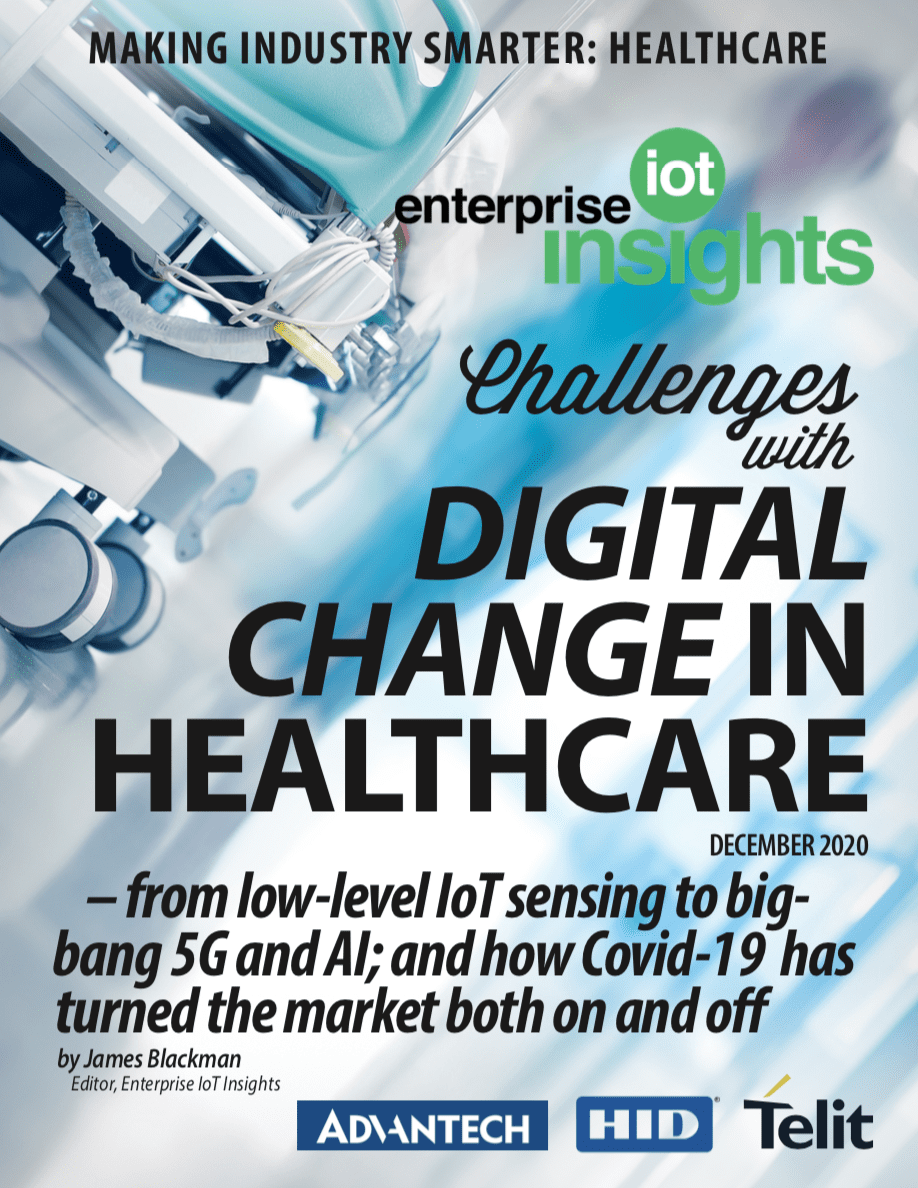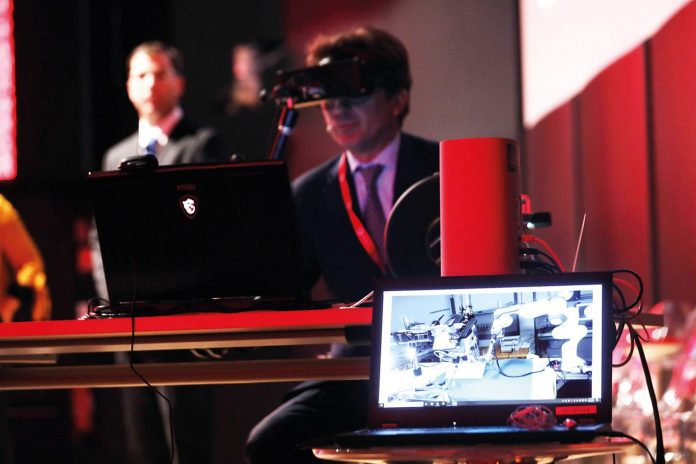Note, this article is taken from a new editorial report on the state of digital change in the healthcare sector (see image below). The report – Challenges with Digital Change in Healthcare – from low-level IoT sensing to big-bang 5G and AI, and how Covid-19 has turned the market both on and off – can be found here.
Vodafone has been experimenting for two years in Milan on potential applications for industrial 5G (pages 16-17). An ex- panding part of its focus in the Ital- ian city has been around healthcare, particu- larly as the coronavirus (Covid-19) pandemic has torn through the country in 2020.
It has been working with the Humanitas Research Hospital in two locations in Milan, and reckons the Covid-19 crisis has made clear the value that 5G-powered sensing and sense-making solutions can deliver for the healthcare market. For the most part, the experiments focused on the hospital’s radiology department, and on the ability to more-easily share high-resolution scans be- tween locations.
However, the pair have also collaborated on wearable devices and medical equipment for remote care to monitor outpatients, and even touched on the futuristic topic of remote controlled surgery (page 9, also). Here, with Vodafone’s findings, we consider four ways in which 5G may help with remote care and collaboration.
1 | REMOTE MONITORING – AT HOME, WITH 5G DEVICES
Remote monitoring alleviates pressure on healthcare by reducing non-urgent visits and freeing-up resources. Home devices are connected with any number of technologies, but 5G, including support for cellular IoT, caters to an explosion in monitoring devices. The ability to run rapid analytics over wireless broadband – between patient and cloud, via the care provider – also enables algorithms to issue alarms, and merges home and emergency care. Vodafone says: “Technology is working together with the doctors, not just for them.”
2 | REMOTE WORKING – IN RADIOLOGY, WITH 5G BROADBAND
A more data-hungry use case, which 5G-style broadband appears to serve well, and something Vodafone has trialled with the Humanitas Research Hospital in Milan (pages 16-17), and which Verizon (actually, Avesha Systems) has worked for colonoscopy exams in 2020 with hospitals in the US (pages 18-19). In Milan, Vodafone’s 5G testbed has been used to switch scans between two radiology units in the city, enabling physicians (in-lockdown) to exchange expertise. As with most cases, 5G is just a good thoroughbred for carrying the load. “It allows a continuous flow between departments and hospitals, even globally.”
3 | REMOTE EXPERTISE – IN AMBULANCES, WITH 5G AR
In Milan, again, the 5G connection has brought resident experts and remote workers closer, to the effect they are “side-by-side”. Vodafone has applied the trick in ambulances, introducing augmented reality into the mix to enable remote physicians to annotate live video feeds from ambulances, to expedite emergency care.
4 | REMOTE CONTROL – IN SURGERY, WITH 5G ROBOTS
The dream use-case for the tech sector? Maybe; and serious demos have started, even if extreme caution should be advised (page 5). Vodafone showed the world such a future-case at its 5G Healthcare day in Milan, off the back of its 5G testbed in the city. (TIM’s parallel demo, detailed on page 22, was a showstopper, too.) Vodafone worked with the Italian Institute of Tech to enable remote surgery “to treat… vocal cords on a synthetic larynx” at the IRCSS Hospital in San Raffaele, 10 kilometres away. The surgeon could control the laser and grippers from the stage, whilst watching a stereoscopic video of the surgery. “It gives a taste of what healthcare in the future will look like.”
Note, this article is taken from a new editorial report on the state of digital change in the healthcare sector (see image below). The report – Challenges with Digital Change in Healthcare – from low-level IoT sensing to big-bang 5G and AI, and how Covid-19 has turned the market both on and off – can be found here.


